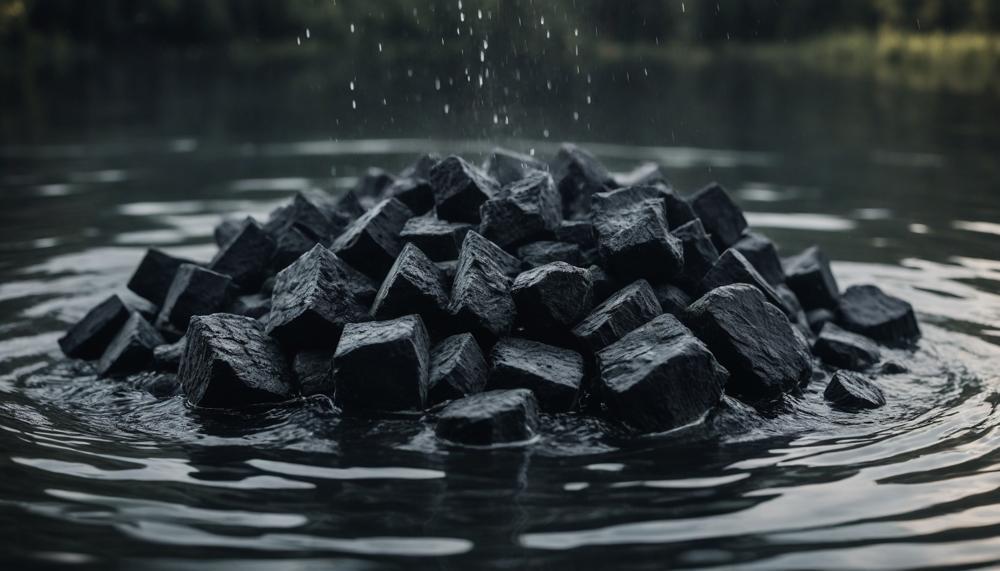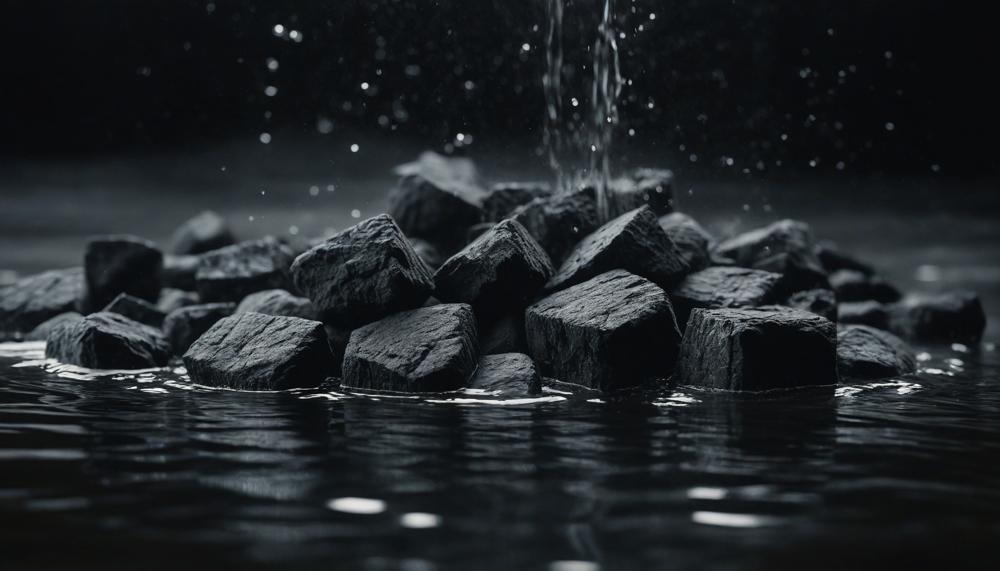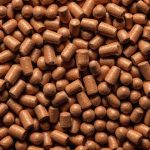Yes, you can absolutely leave charcoal in water. Charcoal, especially activated charcoal, is not only safe to immerse in water but also enhances the water’s quality by purifying and enriching it with essential minerals. This simple act of placing charcoal in water can lead to several benefits, from improving taste to boosting health benefits.
Key takeaways include:
- Charcoal naturally purifies water by removing contaminants and unpleasant odors.
- It reintroduces vital minerals like calcium and magnesium, enriching the water you drink.
- Regular use of charcoal in water can enhance overall hydration and health.
Imagine sipping on water that’s not just refreshing but also packed with health benefits. That’s the promise of using charcoal in your daily water intake. Charcoal’s ability to improve water quality makes it a smart choice for those looking to enhance their hydration habits. Keep reading to uncover how charcoal works its magic in water and the best practices for using it effectively, ensuring that every sip you take is better for your taste buds and your health.
Contents
- 1 Homemade charcoal water filters that can turn swamp water into safe drinking water.
- 2 US Cavalry and DIY charcoal water filters
- 3 City Electrical Engineer and ultra-simple DIY Charcoal Water filters.
- 4 How does charcoal filter water?
- 5 Ancient Seafarers and DIY charcoal water filters.
- 6 Africa missionary and a DIY charcoal water filter.
- 7 Antibiotics in ground water
- 8 DIY charcoal water filter rain barrel.
- 9 Conclusion
Homemade charcoal water filters that can turn swamp water into safe drinking water.
Homemade charcoal water filters can transform swamp water into safe drinking water through a meticulous, multi-stage filtration process. Here’s how:
Filtration Process Breakdown:
Initial Stage: Rocks
- Function: Large rocks filter out twigs, leaves, and other sizeable debris.
- Process: Swamp water enters the bottom of this section, leaving large particles behind.
Secondary Stage: Sand
- Function: Fine sand traps smaller debris and fine contaminants.
- Process: Water flows from the rock section into the sand layer, removing finer particles.
Final Stage: Charcoal
- Function: Charcoal absorbs dissolved chemicals, pigments, and odour compounds.
- Process: Water then passes through the charcoal, which effectively purifies it by removing harmful substances and improving taste and odour.
Efficacy and Additional Purification
- Charcoal’s Role: Charcoal is adept at removing toxic chemicals and improving water taste by eliminating unpleasant odours. However, it is less effective against heavy metals and fluoride. For these contaminants, additional filtration methods, like bone char, may be required.
- Safety Measures: To ensure all pathogens are eliminated, the filtered water should be boiled after passing through the charcoal filter.
Practical Applications
- Example from Benin, West Africa: A rain barrel contaminated by a dead animal was deodorized using charcoal chunks, showcasing its potent purification capabilities.
DIY and Commercial Enhancements
- Combining Techniques: Using both homemade and commercial charcoal filters can enhance water purification, providing tailored solutions for specific needs such as taste, odour, and contaminant removal.
Benefits of Charcoal Filtration
- Improved Water Flavor: Charcoal effectively removes impurities, resulting in cleaner and more refreshing water.
- Health Benefits: Charcoal can reintroduce essential minerals like calcium, magnesium, and iron into the water, improving its overall health benefits.
US Cavalry and DIY charcoal water filters
The US Cavalry effectively employed DIY charcoal water filters to secure clean drinking water during their operations in remote and harsh environments. These filters, inspired by ancient seafaring purification techniques, were crucial for their survival and operational efficiency.
Construction and Functionality
The filters were ingeniously assembled from everyday materials. The Cavalry crafted these by stacking layers of sand, gravel, and charcoal within rudimentary containers like barrels or hollow logs. This setup mimicked natural filtration processes:
- Sand Layer: Trapped larger particulates and sediments.
- Gravel Layer: Assisted in removing smaller debris.
- Charcoal Layer: The key element, activated charcoal, adsorbed toxins, bacteria, and other pathogens, significantly improving the water’s purity and taste.
Practical Implementation
These water filters were not only effective but also lightweight and straightforward, catering to the Cavalry’s mobile lifestyle. They could be quickly assembled, disassembled, and transported, making them ideal for continuous and rapid relocation.
Versatility Across Environments
Whether drawing water from a swamp, river, or rain, the charcoal filters consistently provided potable water. This adaptability was vital for survival, especially in areas where traditional water sources were contaminated or scarce.
Efficacy
The strategic use of these filters drastically reduced the incidence of waterborne diseases among the troops, bolstering their health and stamina.
Legacy
The legacy of the Cavalry’s DIY charcoal water filters persists, influencing modern water purification technologies. The basic concept they utilized remains integral to contemporary filtration systems.
Table of Practical Components of DIY Charcoal Water Filters
| Component | Material | Purpose |
| Sand | Coarse river sand | Traps larger particulates |
| Gravel | Small pebbles | Aids in finer filtration |
| Charcoal | Activated charcoal | Absorbs chemicals and pathogens |
For more detailed insights on historical water filtration practices, you can explore resources like Water Purification Methods.
City Electrical Engineer and ultra-simple DIY Charcoal Water filters.
A city electrical engineer can utilize ultra-simple DIY charcoal water filters to improve water quality and safety in several practical and impactful ways.
Emergency Preparedness:
- In crisis situations, such as natural disasters, ensuring access to clean water is paramount. Ultra-simple DIY charcoal filters can be rapidly deployed to provide immediate relief, filtering out physical impurities and many pathogens.
Community Outreach Programs:
- By integrating these filters into community education initiatives, city engineers can teach residents how to construct and maintain their own water purification systems. This empowerment can significantly enhance public health, especially in underprivileged areas.
Supplementary Filtration:
- These DIY filters can be used as a supplementary method alongside existing municipal water treatment processes. They can act as an additional layer of filtration to improve water clarity and taste, making treated water more appealing and safer for consumption.
Cost-Effective Solution:
- Charcoal filters are economical, making them an ideal solution for budget-conscious municipalities. They can be assembled using inexpensive materials, and the activated charcoal can be replaced periodically at a low cost, ensuring long-term sustainability.
Environmental Sustainability:
- Charcoal used in these filters can be derived from sustainable sources, and spent charcoal can be repurposed in gardens or compost, promoting a circular economy. This reduces waste and encourages eco-friendly practices.
Integration with Solar Disinfection (SODIS):
- Combining DIY charcoal filters with SODIS enhances pathogen removal. Water filtered through charcoal can then be exposed to sunlight, which kills remaining bacteria and viruses. This two-step process is particularly effective in areas with ample sunlight.
Historical Insights and Practical Use:
- Drawing from historical practices, such as those used by the US Cavalry, city engineers can adopt and adapt these methods for modern applications. This blend of historical wisdom and modern technology can provide reliable solutions in various urban and rural settings.
How does charcoal filter water?
Charcoal filters water through a process known as adsorption, where contaminants in the water are trapped on the surface of activated carbon. Activated carbon is essentially charcoal that has been treated to create a vast network of tiny pores, increasing its surface area.
This enables the charcoal to capture a wide array of water contaminants, from volatile organic compounds and chlorine to sediments and odors, thus significantly improving the water’s taste and safety.
Detailed Explanation:
Activated carbon, the hero in charcoal filters, is manufactured from carbon-rich materials such as coconut shells or wood. These materials are exposed to high temperatures in an environment that is low in oxygen. This process forms a lattice of carbon atoms with countless microscopic pores.
These pores provide a massive surface area that can bind with and adsorb various chemicals and impurities present in water through physical and chemical processes.
The efficacy of charcoal filtering can be illustrated through its primary mechanisms:
- Adsorption: As water passes through the activated carbon, organic contaminants and chlorine are attracted to and held within the carbon’s porous structure.
- Chemical Reactions: Certain contaminants undergo chemical reactions with the carbon, transforming them into less harmful substances.
- Microfiltration: The physical structure of the carbon also blocks larger particles and sediments from passing through.
Ancient Seafarers and DIY charcoal water filters.
Ancient seafarers, notably the Phoenicians around 450 B.C., ingeniously utilized charred wooden barrels to store and purify drinking water on long sea voyages. This early form of water filtration exploited the natural adsorptive properties of charcoal to maintain the water’s freshness and safety.
By scorching the interiors of wooden barrels, they not only extended the lifespan of the barrels but also improved the quality of the stored water, protecting it from spoilage and contamination.
Detailed Explanation:
Charcoal, primarily from wood, was the key component in these ancient filtration systems. Its porous nature allowed it to absorb impurities and odors from the water, effectively making it safer for consumption during extended periods at sea. This method showcased a remarkable understanding of natural purification techniques, well before the advent of modern filtration technologies.
Here’s a comparative table highlighting the properties and uses of charcoal as used by ancient seafarers and its evolution into modern applications:
| Aspect | Ancient Use | Modern Evolution |
| Material | Charred wood | Activated charcoal |
| Purification Method | Scorching wooden barrels | Advanced filtration systems, including industrial and medical applications |
| Environmental Impact | Natural and eco-friendly | Reusable and sustainable options widely available |
| Limitations | Poor removal of fluoride and heavy metals | Modern filters address a broader range of contaminants |
Practical Implications for Modern Users:
Understanding the historical use of charcoal in water filtration not only provides insights into the ingenuity of ancient seafarers but also informs the development of sustainable and efficient filtration methods today. Modern users can employ similar DIY charcoal filtering techniques, especially in emergency situations or in areas lacking sophisticated water purification systems. This age-old method remains a testament to human innovation in ensuring access to clean water.
Africa missionary and a DIY charcoal water filter.
Answer: DIY charcoal water filters are profoundly beneficial for Africa missionaries striving to provide clean drinking water to communities in need. These filters use activated charcoal, known for its contaminant-absorbing properties, to transform unsafe water into potable water effectively. This method is not only practical but also steeped in historical precedent, reflecting ancient techniques for water purification.
The benefits of employing a DIY charcoal water filter in missionary work are manifold:
- Cost-Effectiveness: These filters are relatively inexpensive to produce, especially compared to advanced water purification systems, making them accessible for widespread use in resource-limited settings.
- Ease of Use: The simplicity of the design and operation of charcoal water filters allows them to be easily implemented and maintained by local communities without the need for extensive training or technical knowledge.
- Adaptability: Charcoal filters can be customized to meet the specific needs of a community, whether it’s for individual households or larger community-based systems.
- Sustainability: By using locally available materials, these filters promote sustainability and reduce reliance on imported goods or technology.
- Proven Effectiveness: As demonstrated by initiatives like Pastor Kurt Dahlin’s TRUSTED Water Bottle Filter, charcoal water filters have been successfully tested and implemented, proving their effectiveness in real-world applications.
Antibiotics in ground water
Antibiotics enter groundwater primarily through the excretion of these compounds from humans and animals, which are then introduced into the environment via wastewater. Despite the body metabolizing a portion of the antibiotics consumed, a significant percentage (70-90%) remains unchanged and is expelled through urine and feces. This waste finds its way to wastewater treatment plants (WWTPs), which are often inefficient in completely removing these compounds. The treated, yet still contaminated, water is subsequently released into rivers and other bodies of water, which can seep into groundwater systems.
This situation is exacerbated by the direct application of manure and other biowastes from livestock farms to fields, where antibiotics can leach into soil and eventually into groundwater. Additionally, industrial discharges from pharmaceutical manufacturing contribute to this problem, especially in regions with lax environmental controls.
Here’s a table summarizing key sources and pathways through which antibiotics reach groundwater:
| Source | Pathway | Typical Outcome |
| Human waste | Wastewater Treatment Plants (WWTPs) | Partial removal of antibiotics, residual antibiotics enter rivers and seep into groundwater. |
| Livestock farms | Direct land application of manure | Antibiotics leach into soil and groundwater. |
| Pharmaceutical manufacturing | Industrial discharge | Direct contamination of water bodies leading to groundwater infiltration. |
The continuous cycle of use and disposal of antibiotics, coupled with insufficient wastewater treatment, underscores the persistent challenge of antibiotic pollution in groundwater. This not only affects the environment but also poses significant public health risks as these contaminants can eventually find their way into drinking water sources.
DIY charcoal water filter rain barrel.

A DIY charcoal water filter rain barrel operates through a sophisticated multi-layer filtration system designed to purify rainwater, rendering it suitable for various uses, including drinking, after appropriate treatment. Here’s a step-by-step breakdown of how each component contributes to the water purification process:
- Initial Screening: Before water even reaches the barrel, a fine wire screen at the rain gutter intercepts larger debris like leaves and twigs. This pre-filtration step is crucial for protecting the finer layers within the barrel from clogging.
- Layered Filtration Inside the Barrel:
- Rocks: The first internal layer consists of small rocks that remove larger particles from the water, preventing them from reaching the more sensitive layers below.
- Sand: Following the rock layer, fine sand further refines the filtration, catching smaller particles and sediments that the rocks cannot.
- Charcoal: The core of the system lies in the charcoal layer. Made from both coarse and fine particles, charcoal uses adsorption to capture and neutralize various contaminants, including organic compounds and chlorine, which enhances the taste and reduces odors.
- Final Purification:
- After the water passes through these layers, additional steps such as boiling or chemical treatments might be necessary to ensure the water is safe for drinking, especially if pathogens are a concern.
Conclusion
The question of whether you can leave charcoal in water isn’t just a matter of possibility but a transformative practice for improving water quality. Charcoal, particularly activated charcoal, not only safely interacts with water but enhances it by extracting impurities and infusing essential minerals like calcium and magnesium. This method isn’t merely an act of purification but a healthful upgrade to your hydration routine, offering a glass of water that is as revitalizing as it is beneficial.
This versatile substance serves as the foundation for both simple homemade and sophisticated commercial water filtration systems. By reenacting a natural filtration process, charcoal filters effectively remove a variety of contaminants, enhance flavor, and reintroduce nutrients essential for health. From the ancient seafarers to modern DIY enthusiasts and communities in remote areas, the practice of using charcoal in water filtration has proven its worth across history and geography.
Encouraging the adoption of charcoal water filtration can lead to broader implications for public health, especially in areas with limited access to clean water. As we embrace this blend of historical wisdom and contemporary science, we empower ourselves with not just cleaner water, but a deeper connection to the elemental resources that sustain us.






